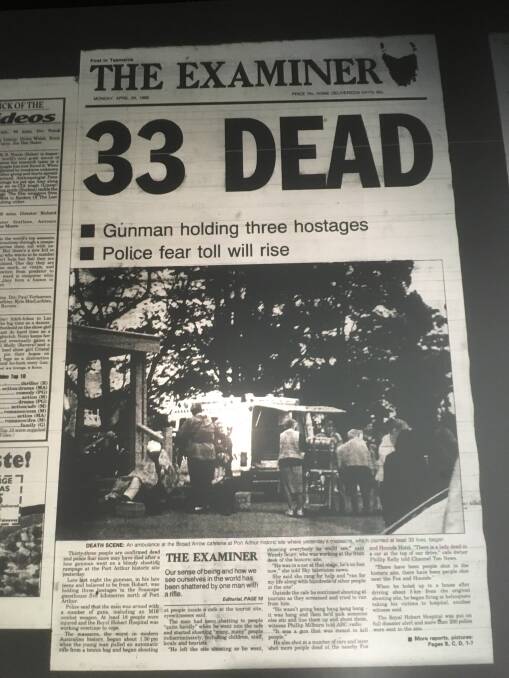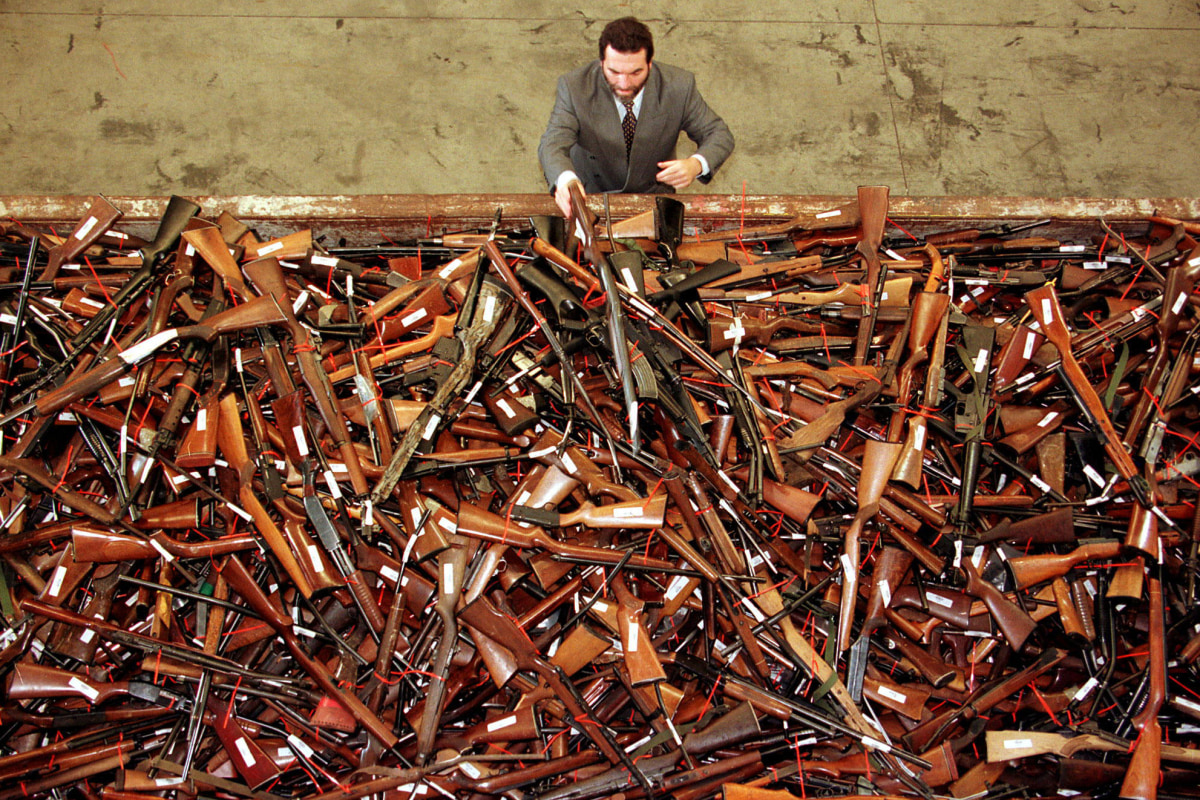For nearly three decades, the Port Arthur Massacre has been remembered as Australia's darkest day .... a moment of unspeakable horror that reshaped our nation overnight.
But beneath the official narrative, buried under layers of media hysteria and political opportunism, lies a web of unanswered questions. As we mark another anniversary, it is time .... past time.... to ask:
Were we told the full truth? Or did our shock and grief become the perfect cover for a plan that changed Australia forever?
Before we surrendered our guns, we surrendered the truth.
As the anniversary of the Port Arthur Massacre on 28 April 1996 approaches, we remember the victims of that dark day - and we are called to remember something else, too: the unanswered questions.
The story we were told shaped a nation's grief and a government's policy. But what if it wasn't the full story? What if the emotional shock of Port Arthur was used not only to disarm the public, but also to silence critical thought?

Here is the official version of events.
The Port Arthur massacre, which occurred on April 28, 1996, is one of the deadliest shootings in Australian history and has had a profound impact on the country's gun laws and society.
The massacre took place at the Port Arthur historic site, a former prison in Tasmania that had become a popular tourist destination. On that day, a lone gunman, Martin Bryant, carried out a series of shootings that resulted in 35 deaths and 23 injuries.

Bryant, armed with a semi-automatic rifle, began his attack at the Broad Arrow Café within the Port Arthur complex. He killed 20 people in the café before moving outside, where he continued his shooting spree. Bryant also went on to murder more victims as he drove through the area, including people at a nearby service station and a couple at a guest house.
After a prolonged police standoff, Bryant was arrested the following day. He was charged with 35 counts of murder and 23 counts of attempted murder.
Bryant was later convicted of all charges. He pled guilty to the killings in November 1996 and was sentenced to life in prison without the possibility of parole.
Martin Bryant sits at the centre of this tragedy, forever branded as the villain. Yet inconsistencies in the official narrative remain glaring for those willing to look. Questions drawn from witness statements and court documents beg for answers:
-
Who fired shots at 6:30pm inside the Historic Site while Bryant was trapped three kilometres away at Seascape? Witness accounts confirm gunfire at the site well after Bryant had already been pinned at Seascape. How could he be in two places at once?
-
Who decoyed police officers away at the perfect time, using a fake tip about explosives? The mysterious phone call to Saltwater River led the only two local officers miles away, leaving Port Arthur vulnerable just as the attack began.
-
Why did Constable Chris Isles leave Dunalley for Port Arthur before any massacre had even begun? Isles was at the crime scene within half an hour of the first shots, despite it being a 35-minute drive. What prompted him to start driving south before news of the shooting broke?
-
Why did victims appear to calmly interact with their killer before being shot, with no attempt to flee? Witnesses described strange scenes: the shooter sitting in cars with victims, chatting, even arguing. Why no instinctive flight from danger?
-
Why was the media allowed to publish Bryant's photo and declare his guilt before he was even charged? This media blitz tainted witness identifications, as noted in court documents, especially the testimony of Bridget Cook, who admitted her memory had been influenced.
-
How could Bryant have been committing a murder at Seascape at 10:40am, when he was documented miles away at that exact time? Chris Hammond served Martin Bryant petrol at Taranna around 10:40am ... an incontrovertible alibi. Yet this crucial fact was dismissed.
These are not minor discrepancies. They strike at the heart of the case.
Martin Bryant, with an IQ of 66, displayed none of the sophisticated tactical planning the massacre demonstrated: rapid reloads, perfect headshots, calm under pressure. Eyewitnesses described the shooter as "cool," "calm," and "professional."
The aftermath was swift and sweeping.
In the wake of Port Arthur, Australians - horrified, grieving, trusting - surrendered over 650,000 firearms under government buybacks.

The National Firearms Agreement of 1996 was presented as a necessary step to prevent future atrocities. Prime Minister John Howard famously said Australians should be "grateful" for giving up their guns.

image is for illustrative purposes only. It is AI generated.
But over the decades since, the consequences have been profound:
-
Criminals retained illegal weapons while ordinary citizens were left defenseless. Criminals, who by definition do not obey laws, remain armed. Organised crime thrives. Violent home invasions, carjackings, and assaults have only increased in many areas, with law-abiding citizens left defenseless by design. Home invasions have surged.
-
Organised crime syndicates have flourished, importing illegal firearms with relative impunity.
-
Public trust has shifted dangerously: from self-reliance to government dependency.
The media, political establishment, and judiciary closed ranks. Public debate has been silenced under the weight of emotional blackmail: questioning the official story was portrayed as disrespectful to the victims.
This episode originally aired in 2016. Remind me never to get his lawyer if I ever need one...
But truth and respect are not opposites. They are companions.
We do not honour the victims by believing a lie. We honour them by demanding justice, transparency, and the right to protect ourselves from harm - whether that harm comes from a lone madman or from a corrupted system.
The disarmament of Australia was not just the removal of weapons. It was the removal of a final safeguard against tyranny, crime, and corruption. It was the beginning of a culture where trusting the government replaced trusting oneself.
And it all began with a tragedy - a tragedy we were told never to question.
I grew up in a rural area where it was normal for kids to have a .22 or a slug gun. If we came across a wounded animal, it was our responsibility to put it out of its misery. It was a practical and humane action.
Now, things have changed. Kids today are sent to libraries to watch drag queens and taught that removing body parts or living as a fantasy identity is normal. They're told that men can give birth and that killing babies at birth is acceptable.
So, I ask: who is the real mass murderer here? The murder of innocence, of the values that once made sense?
Since the Port Arthur massacre, Australia’s strict gun laws have been credited with reducing mass shootings, but we’ve seen a rise in other forms of violence, particularly stabbings. This suggests that when people are determined to harm others, they'll find the means, whether it’s a knife, a car, or any other tool.
The problem isn’t the weapon; it’s the deeper issue that society refuses to address. The real danger isn’t the gun or the knife, but the erosion of moral clarity and the values that once guided us.
Monty.

















































